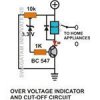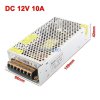 Hello everyone I need help building an automatic switcher that can handle 10A@ 110v, 5A@ 240v.
Hello everyone I need help building an automatic switcher that can handle 10A@ 110v, 5A@ 240v.I have a need to be able to connect 1 cord to a wall outlet that can be either 110v or 240v and to switch a relay tripping a 110v/240v switch on a 12v power source. Let me explain more I have a power inverter 12.5A/dc on the inverter there is a switch for using 110v or 220v. I have replaced the switch with a 240v relay so that when 240v power is introduced it energizes the relay and connects the NO contacts for 240v. when the coil is off it is connected to the NC contacts with 110v.
My concern is that with the contacts closed in the 110v position, when I apply 240v to switch on the coil and close the contacts to the 240v position, that, that millisecond of 240 applied to the 110 contacts will burn out the components of this ac/dc inverter
Is there any circuit that can be built to do this, 110v out turns energizes a relay coil, and 240 does not energize a relay coil.
Remember that the unit must have only one cable in using both 220v and 110v, to the circuit turning on a relay coil with 110v, and keeping the relay off with 220vView attachment 119471
Is there any way to make this circuit as described? I could us a 110v relay then connecting the 220v to the NC but would need to prevent 220v going to the relay coil to prevent switching.
Last edited:


